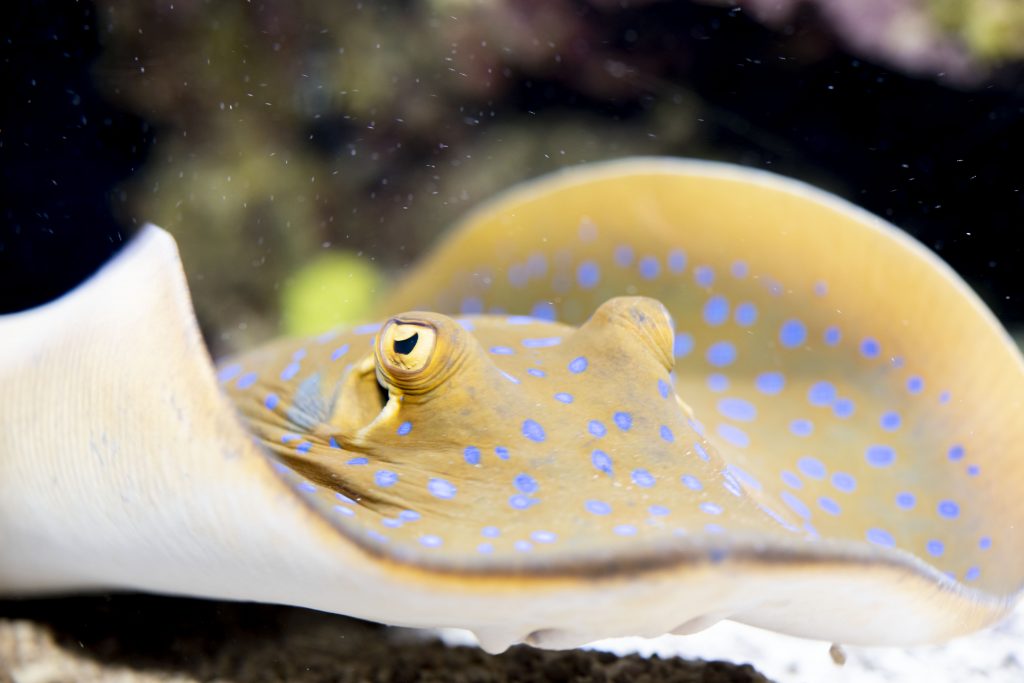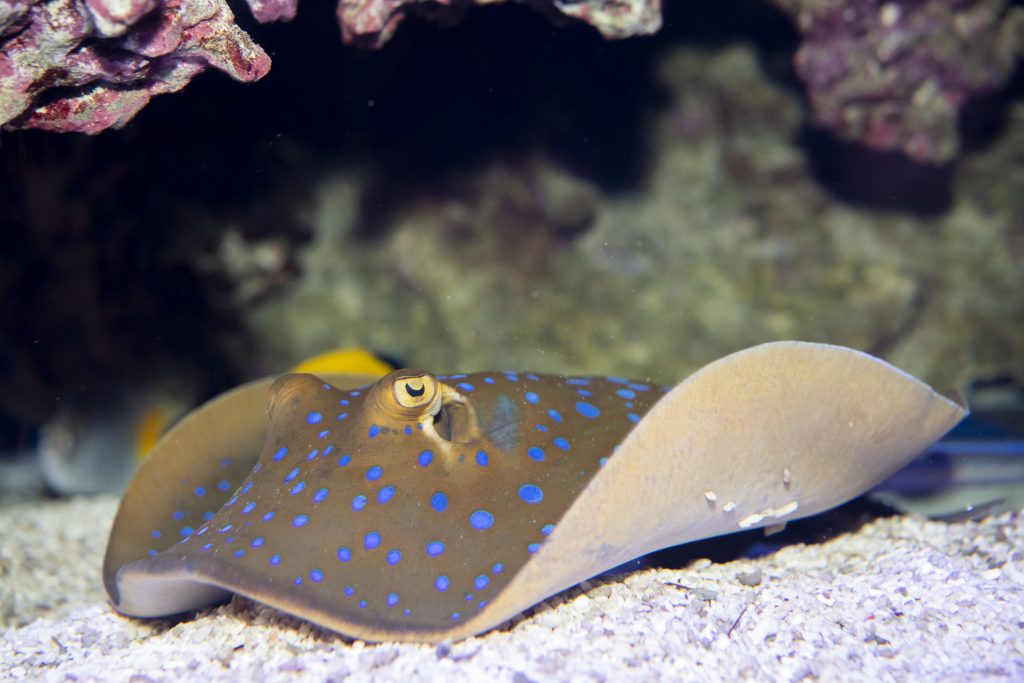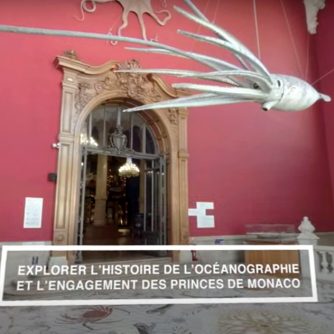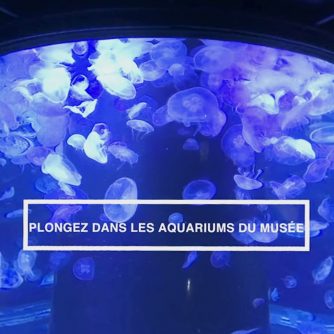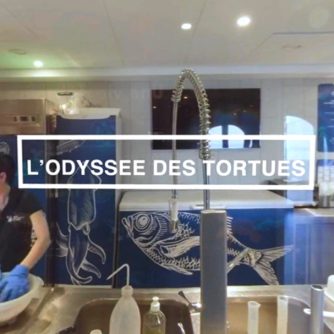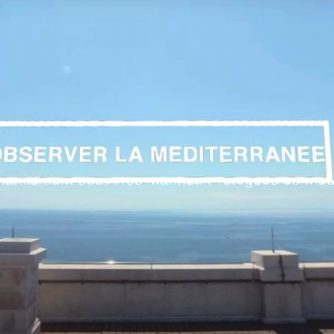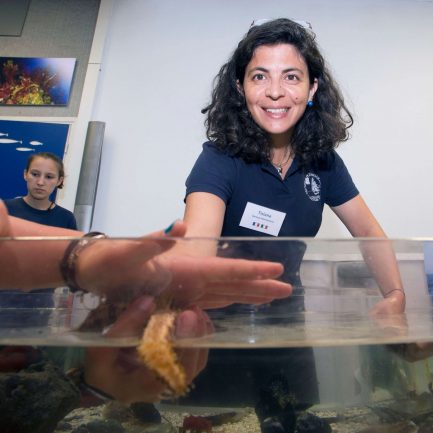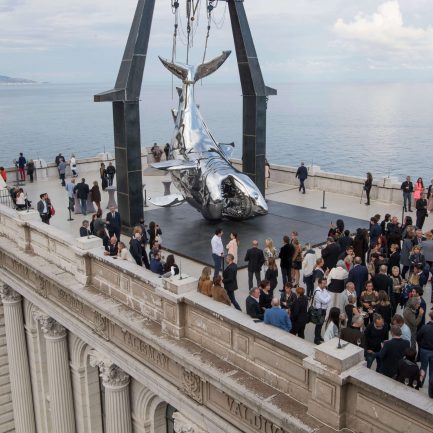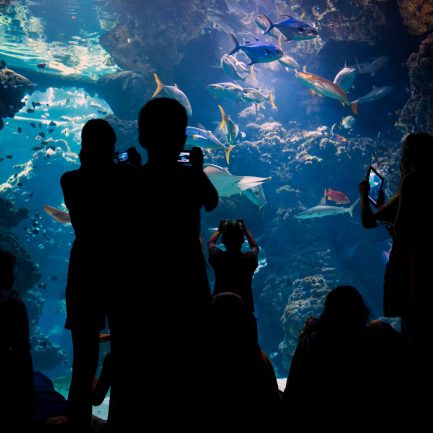Dive into the museum's aquariums
- Home
- Actualités
- Chapter 3 – The Museum’s Aquariums
Admire the living to better
to know, love and protect him.
The steps of your virtual visit
Points of interest:
The Aquariums of the Mediterranean Sea :
- Aurelia Aurita
- Hippocampus guttulatus
- The brown grouper (Epinephelus marginatus)
Aquariums of the tropical seas :
- The Shark Lagoon
- The Coral
- Clownfish (amphiprion ocellaris)
- Blue Spotted Stingray (Taeniura lymma)
The Aquariums of the Mediterranean Sea
- The aquariums of the Mediterranean Sea
Aurelia aurita
It is a jellyfish with a low sting, 98% water content! Its umbrella can measure up to 40 cm in diameter and be bordered by 1000 tentacles. It is very often presented in Aquariums. It is present in all oceans except the poles. The pollution of the oceans and overfishing are causing the disappearance of its predators and its pullulation! This jellyfish is recognizable by the shape of its gonads. In the center of the umbrella we can see four darker areas drawing a kind of four-leaf clover. The gonads are purple in males and whitish in females.
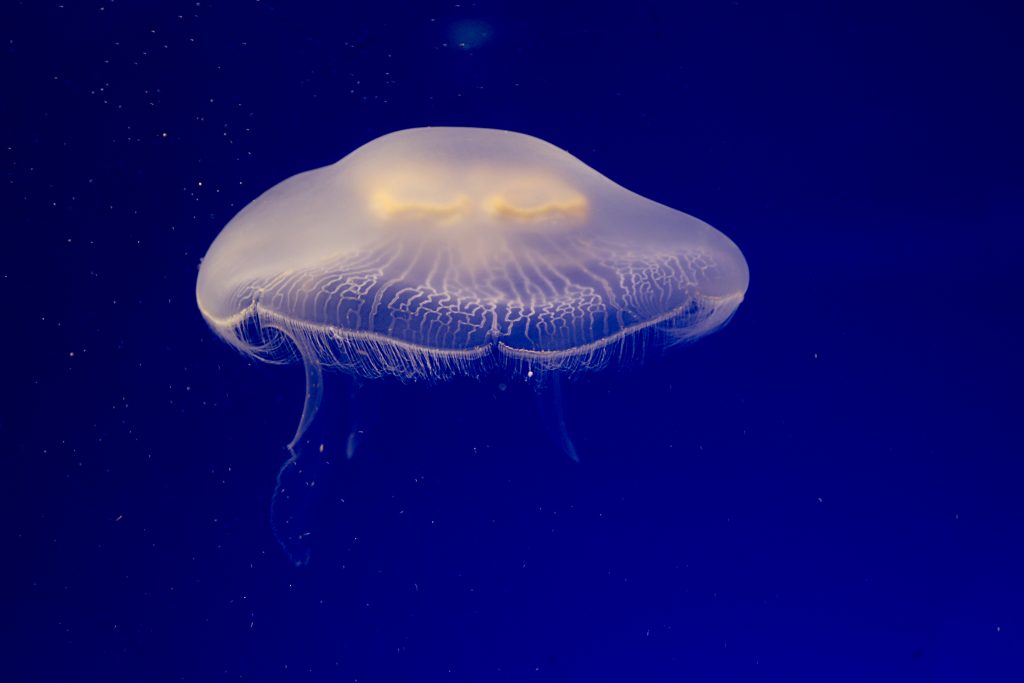
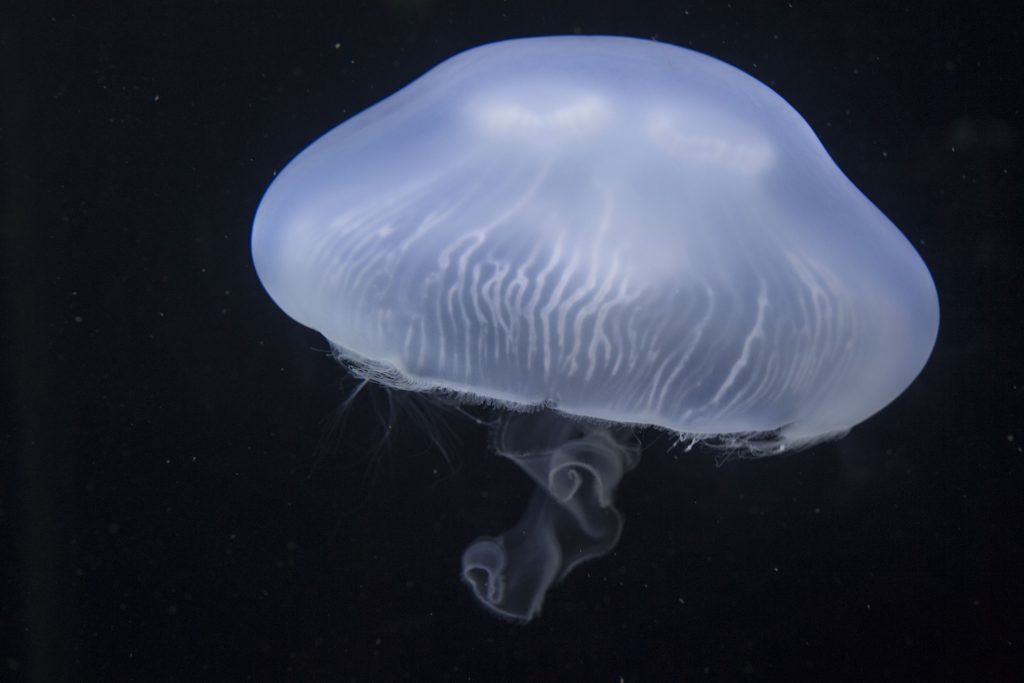
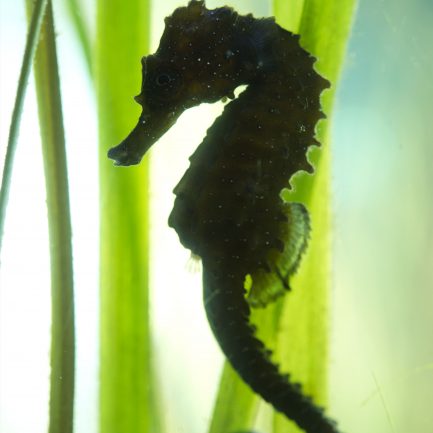
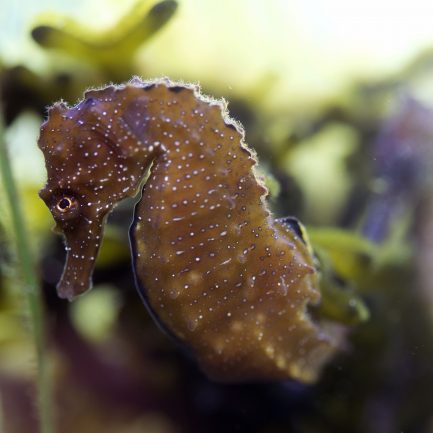
- The aquariums of the Mediterranean Sea
Hippocampus guttulatus
The speckled seahorse is one of the 2 species of seahorses living in the Mediterranean.
This fish moves vertically, head up, which makes it look a bit like a horse: hence its nickname of “sea horse”. The seahorse is found at shallow depths (down to -20 m) mainly on sandy bottoms covered with sea grass. It clings to algae or gorgonians with its tail.
Seahorses are nowadays endangered due to the degradation of their environment, the discharge of pollutants or intensive fishing.
- The aquariums of the Mediterranean Sea
The brown grouper Epinephelus marginatus
Can reach 1.50 m in length, weigh 60 kg and live up to 50 years! It is one of the biggest fishes of the Mediterranean coasts. The brown grouper appreciates rocky habitats rich in cavities and caves where it hides. It lives from 0 to -200m depth. The brown grouper is protected in France and in Monaco. All brown groupers are born female! Then between 10 and 14 years old (60-70 cm) they change sex and become males. The brown grouper hunts on the lookout waiting for a prey to come to its range, it feeds mainly on cephalopods (cuttlefish, octopus, squid), crustaceans and fish.
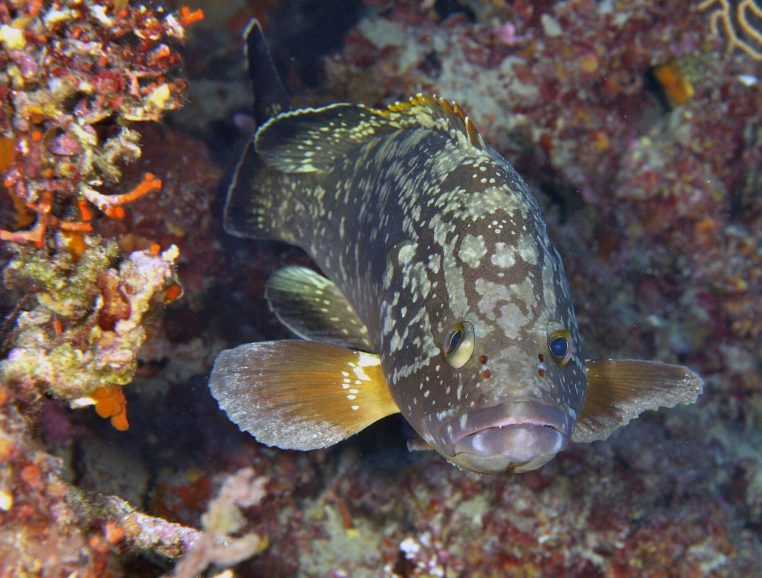
Tropical Seas Aquariums
- Tropical seas aquarium
The shark lagoon
The “Shark Lagoon” is the Aquarium’s largest pool with 240,000 litres of seawater. It is home to most of the museum’s most impressive species: nurse shark, blacktip shark, guitar ray, zebra shark and hawksbill turtle. As in the ocean, there is a harmonious balance in this pond that allows them to cohabit and evolve naturally before your eyes!
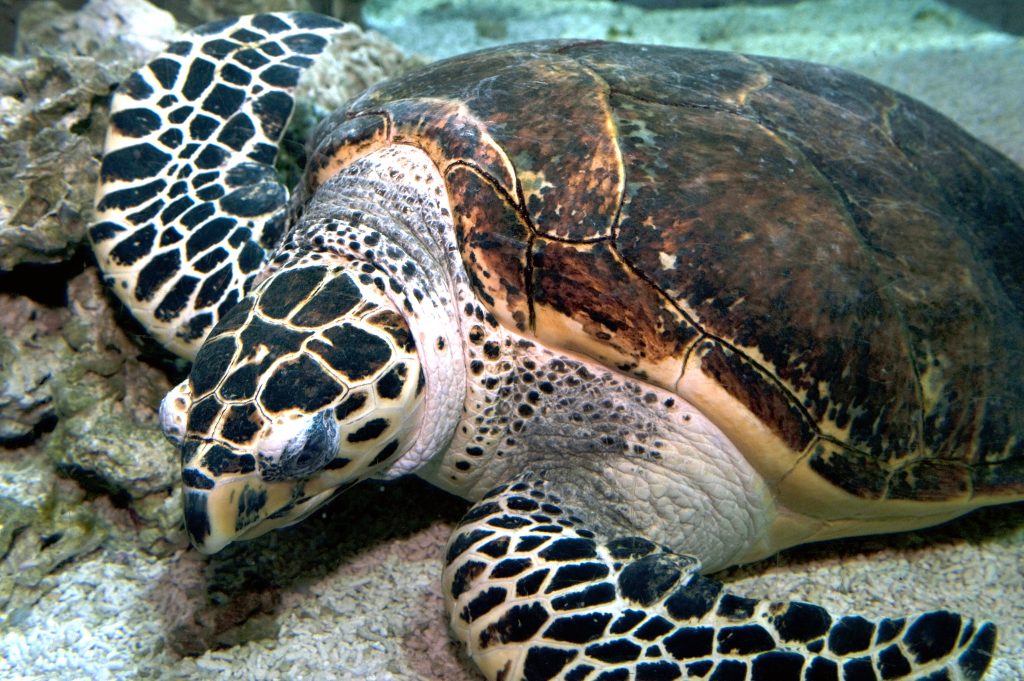
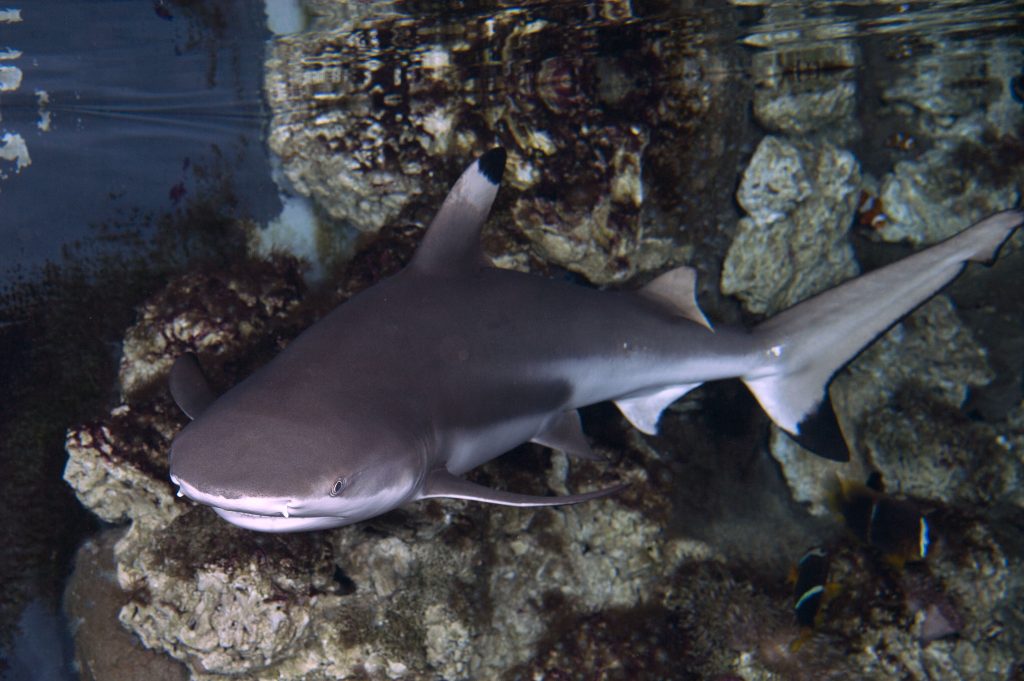
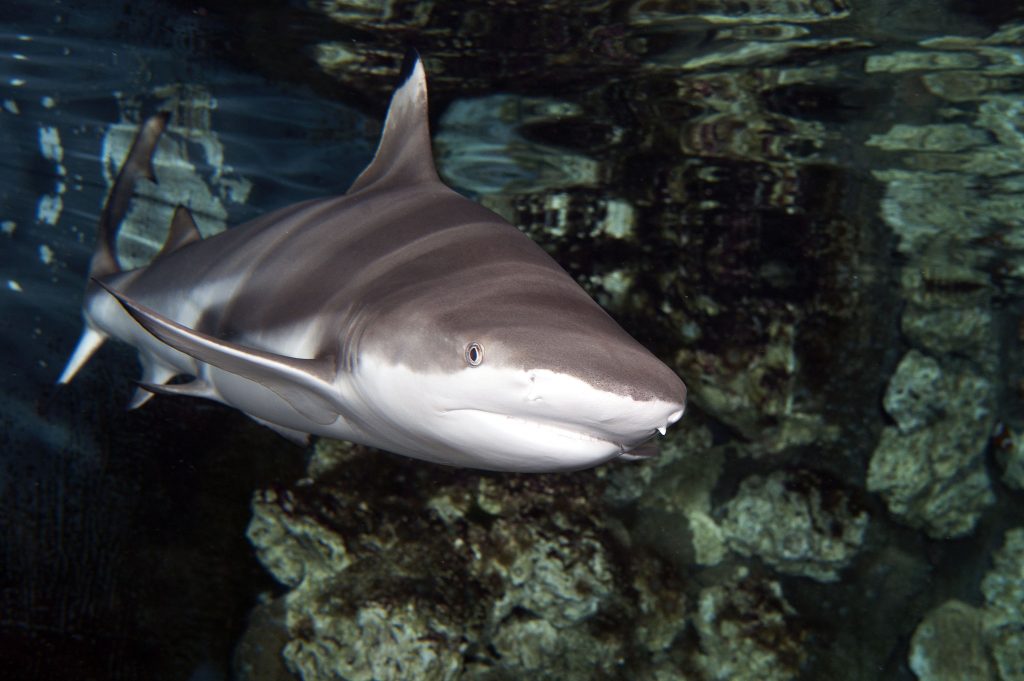

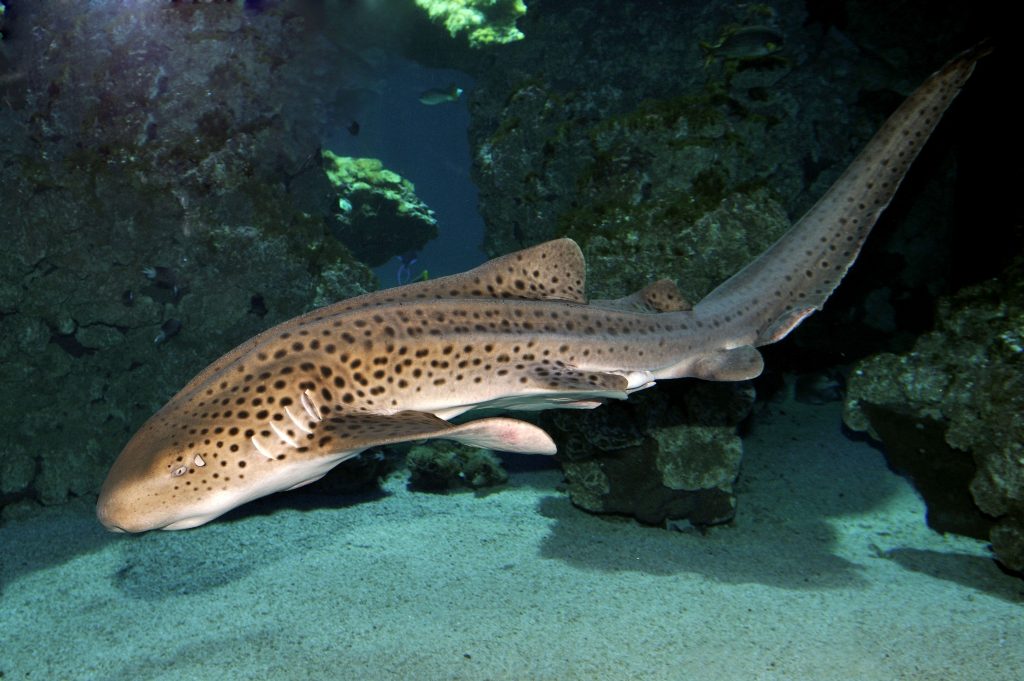
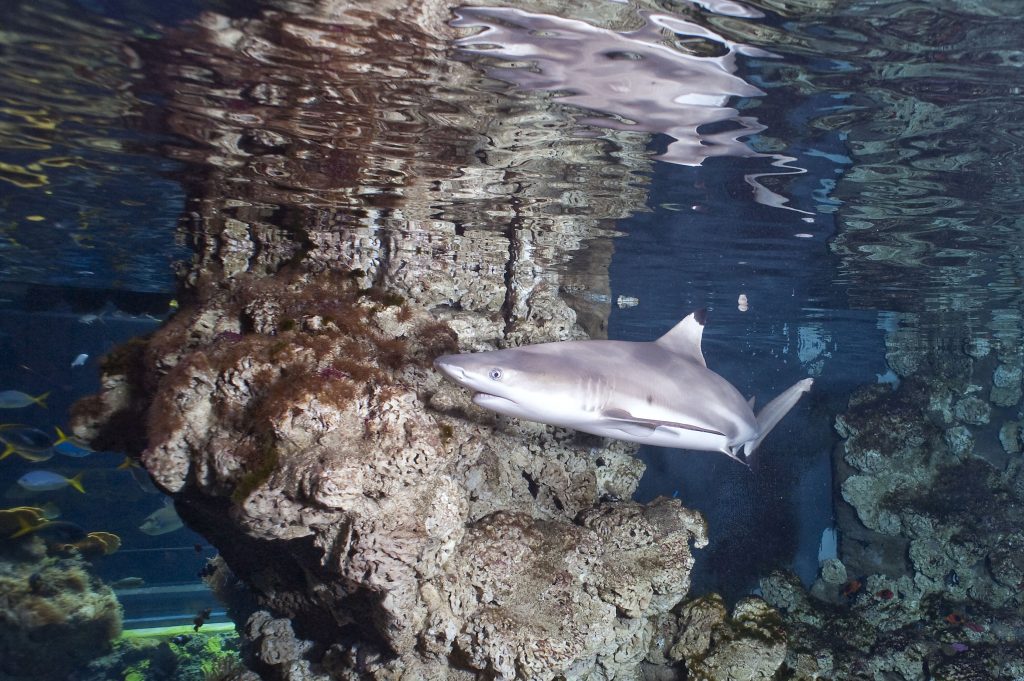
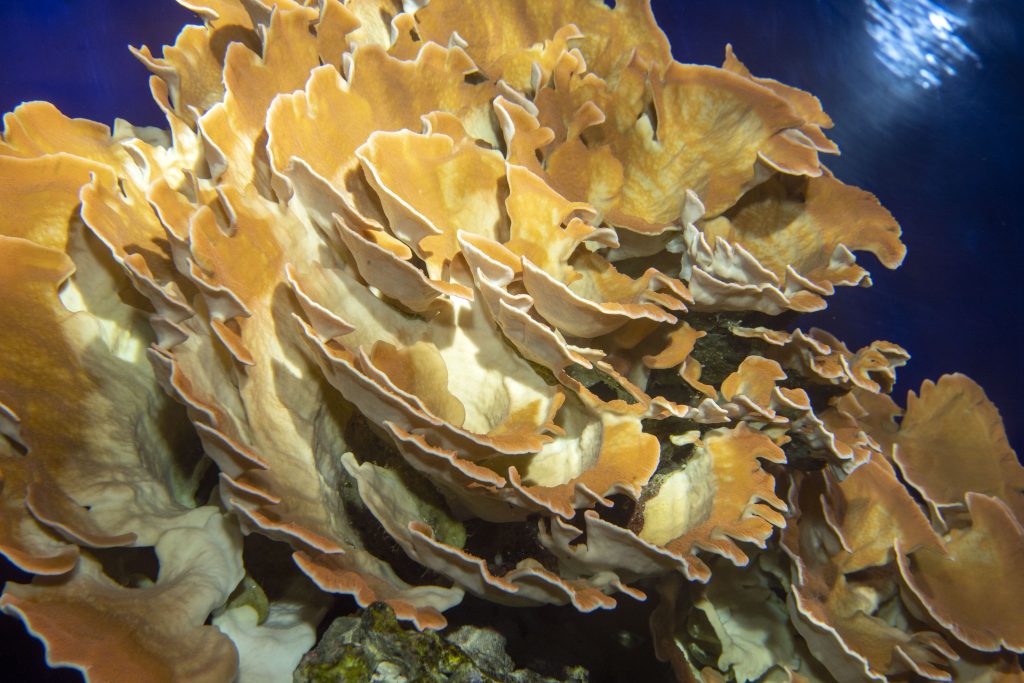
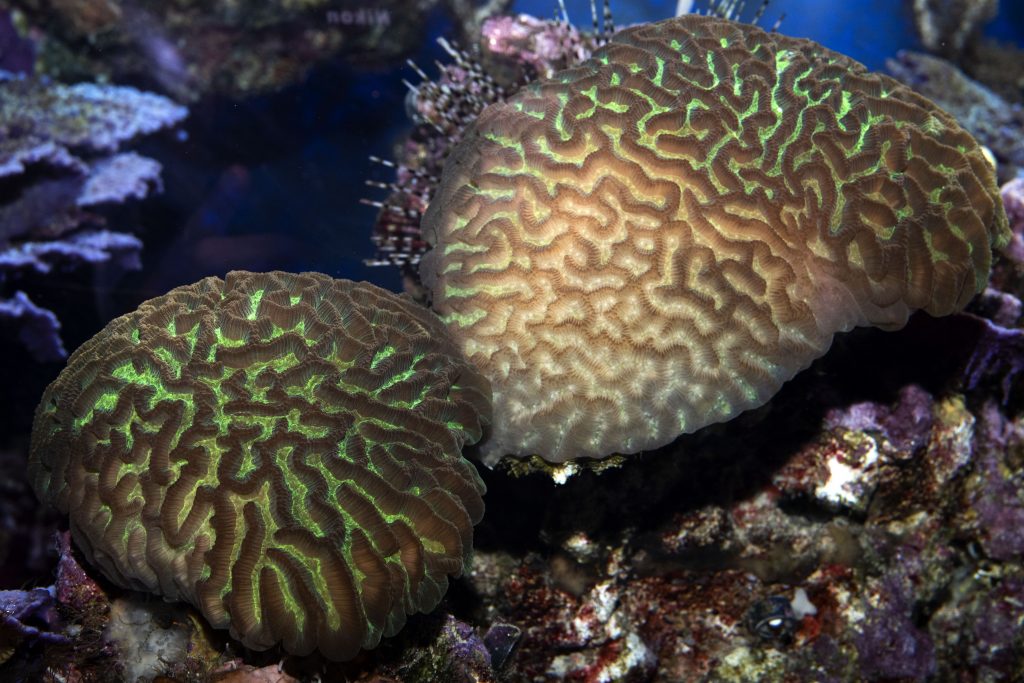
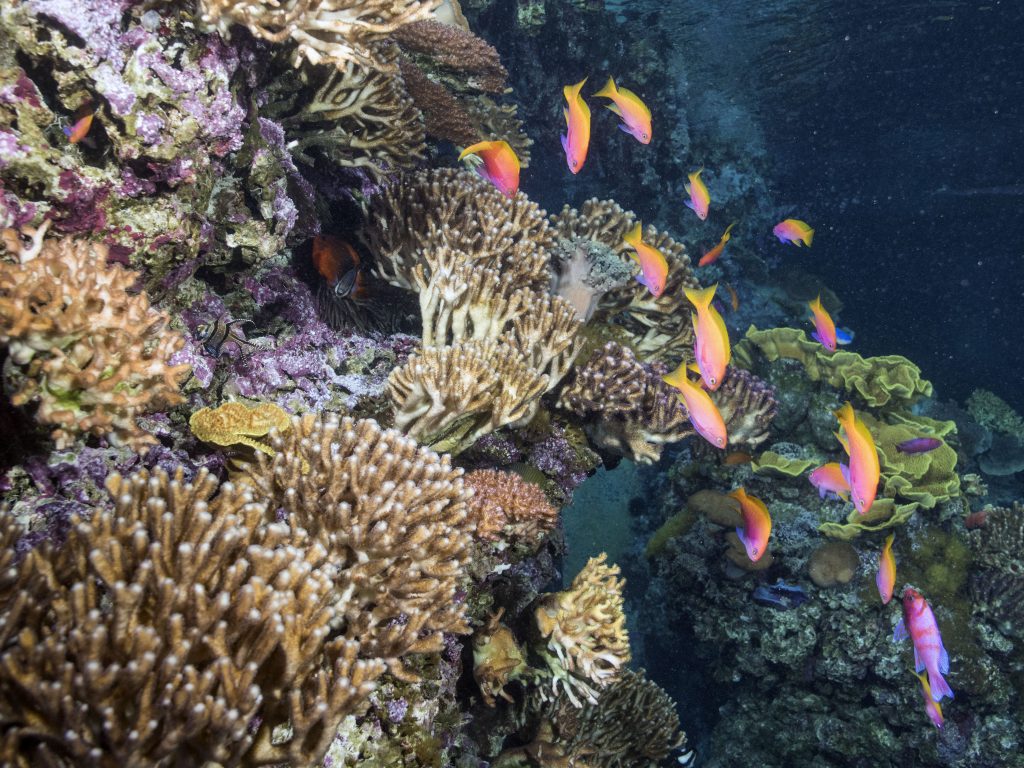
- Aquariums of the tropical seas
The coral
Did you know that coral is an animal?
Thousands of polyps develop on a limestone skeleton and form colonies which in turn form reefs, the only biological constructions visible from space! Extremely threatened, coral reefs are victims of global changes, and in particular of global warming which leads to massive bleaching episodes, visible signs of the death of the
coral! (+ Hyperlink between the “Coral” articles of the site).
- Tropical seas aquarium
clown fish
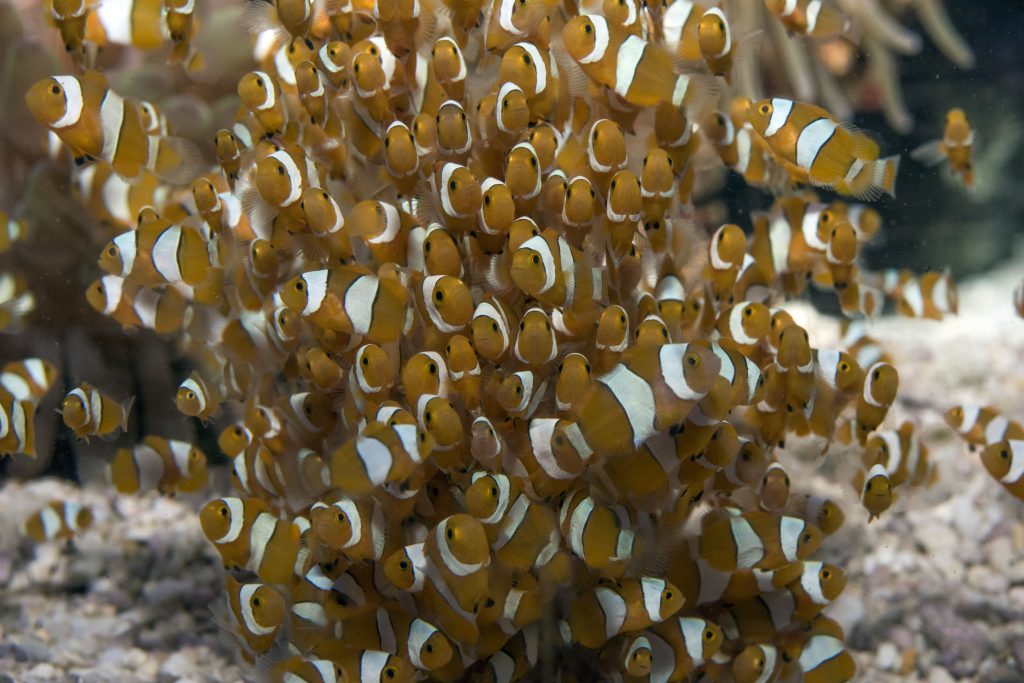
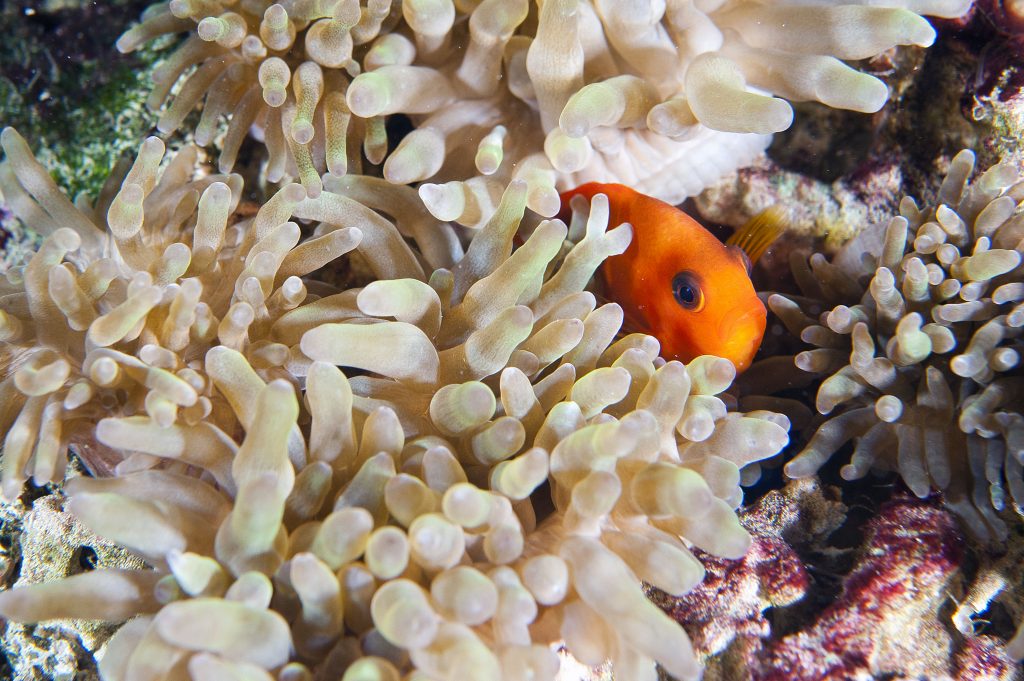
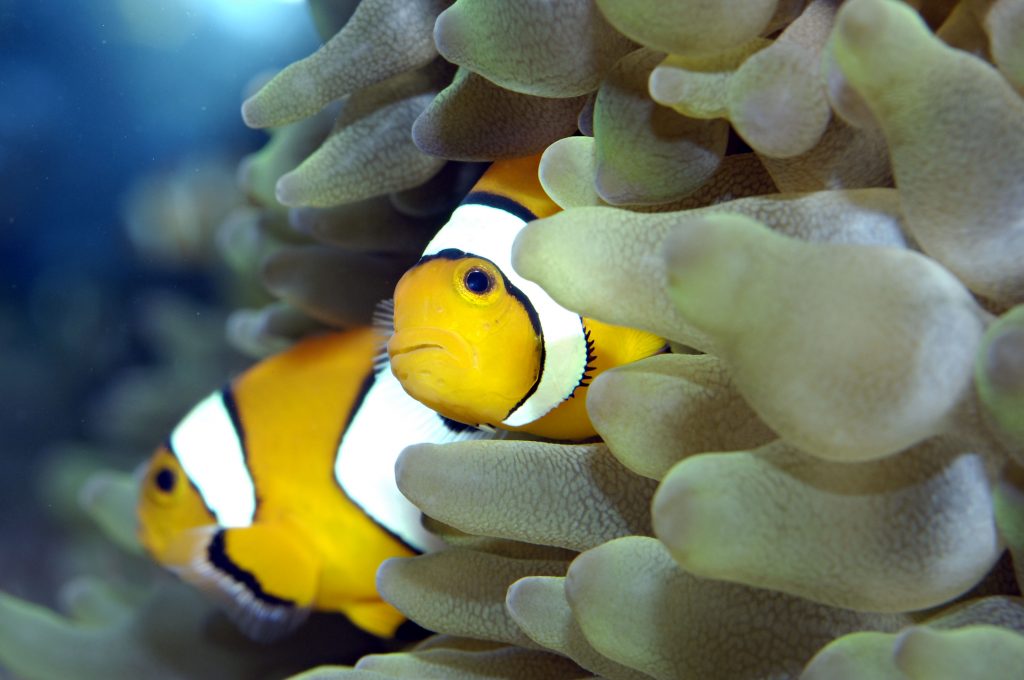
The mascots of our tropical aquariums are born in our nursery. They are the best representatives of the efforts made by the Oceanographic Museum to develop fish reproduction and thus limit withdrawals from the natural environment.
- Tropical seas aquarium
Blue-spotted stingray(Taeniura lymma)
Its tail has venomous stings at the base that can produce a painful or even fatal sting. This little blue-spotted ray is one of our favourites. A fish with a cartilaginous skeleton like the sharks, this small ray usually lives in the Indo-Pacific area and feeds on small crustaceans, glasses or small fishes that it finds by searching the sand. It can also bury itself and leave only its eyes protruding to watch for prey as well as predators!
